Your lips are like wine, and I want to get drunk. bisexual
Don't wanna be here? Send us removal request.
Text
Wants vs Need - A Comparison Between Kataang, Taang, and Zutara

A common source of conflict and theme developments within stories stems from the idea of Want vs Need, which effectively describes the difference in substance between ships like Kata/ang and ships like Zutara and Taang.
As so many meta have analyzed before, Kata/ang, as a relationship, places the emotional burden on Katara. More specifically, it forces her to be responsible for Aang’s happiness and well-being when he barely acknowledges Katara’s inner conflicts or desires. Even more than that, Katara is the embodiment of everything Aang believes he wants (compassion, kindness, peace) when refuses to see the more human parts of Katara (anger, grief, force), all of which I dissect in “On Ideals and Idealization.” Thus, rather than embracing the nuance in the divide between past and present, between war and peace, between justice and revenge, Aang stubbornly clings onto his perception of the Air Nomads’ beliefs - beliefs that he only shallowly understands.
The show itself even sets up a Want vs Need conflict for Aang in “The Guru” when he has to choose to let go of his selfish attachment of Katara to master the Avatar State, which can be interpreted to represent his need to let go of his blinding biases so that he can see the world’s truths and understand his responsibility to it (expanded upon in this ask).

It’s true that in the episodes “The Desert” and “The Serpent’s Pass” Katara and Aang find themselves in a state of conflict, but it is resolved in a way that only shallowly emulates a Want vs Need story. In both, Katara’s compassion serves as an anchor for Aang when his anger and grief threatens to overwhelm him, allowing him to remain hopeful even while Appa, his last living tether to the Air Nomads, is missing. These two episodes encapsulate Aang’s struggle as an Air Nomad as it shows him struggling to come to terms with the Air Nomad’s disappearance (symbolized by Appa’s disappearance) by recognizing the potential for a cultural revival (symbolized by Hope’s birth). However, Aang’s identity as an airbender in a world that has forgotten the Air Nomads is never fully realized, and so the effects of this conflict resolution never manifest in his character - Aang at the end of the series finale is not much wiser than Aang at “The Desert”/”The Serpent’s Pass,” so Katara’s role is reduced from the catalyst in extending Aang’s worldviews to someone who calms him down during a wrathful relapse of his usually sunshine-smiley self.

As for Katara herself? Her relationship with Aang pigeonholes her into one facet of her character - her kind and loving side - which is regressive rather than progressive in her series-wide character arc. In her confrontation against the Northern Water Tribe’s sexist norms, against Hama and the legacy of bloodbending, and against her mother’s killer and the implications of Fire Nation imperialism, Aang’s personal beliefs do not influence Katara’s in any constructive way. The most Aang ever provides to Katara as himself is a vehicle to achieve her goals, as his Avatar status allows her to travel the world with him. And so Katara fosters her agency and autonomy, expands her role in the world, and validates the importance of her feelings - all for what? For the last ten minutes of the finale to turn a light switch on her feelings for Aang and have them kiss without even a conversation beforehand.

Kata/aang is all about want. But Taang and Zutara are all about need.
Character conflict is not always necessary to write a compelling romance, and focusing solely on generating conflict often leads to the badly written melodrama and misunderstandings that often plague the romance genre today. So rather than focus on creating interest based on drama, the most captivating fictional relationships I’ve seen show how characters support each other’s needs over their wants.
Keep reading
772 notes
·
View notes
Note
ppl love to forget that katara: 1. has her own taste, 2. developed around aang, he needed her for his development and vice versa, 3. ZUTARA IS SHIP BETWEEN AN OPPRESOR X OPPRESSED!!! Ignoring all of the development they had with their respective partners and the trauma Zuko caused Katara!!
In the infamous words of one Luke Skywalker: amazing. every word of what you just said was wrong.
It’s actually kind of ironic that you bring up Katara’s taste, since, throughout the show, we have examples of the guys she likes, to greater or lesser extents in canon--Jet (explicit romantic feelings on her part, word of god that jet was her first kiss--a kiss that would have been consensual, incidentally, something you should keep in mind for later) and Haru (she denies the crush, but that could just as easily have been because of the abomination he’d been growing on his lip rather than denying those feelings ever existed), both of whom have much more in common (in terms of both emotional and physical maturity, and physical appearance) with Zuko than either of them has with Aang.
Zuko’s book 3 hairstyle is almost exactly reminiscent of Jet’s, even, if not quite as floofy.
(This is probably in part because of Jet’s function as a foil of Zuko within the narrative, particularly given their book 2 encounters, which I think just further solidifies my point that, were it not for extenuating circumstances [like the fact that Zuko was introduced as an enemy and they had significant obstacles to hurdle before they could be friends], Zuko would have been exactly Katara’s type. Had they met under different circumstances, she could have been the girl he went on a date with in Ba Sing Se. Just something to think about.)
So, yes, we’ve established that Katara has her own taste. Her tastes seem to be boys with great hair who are taller than her, the same age or older, and of a similar maturity level.
Aang falls short (heh, short) on all counts. So it isn’t Katara’s taste in boys that led her to be interested in him. Hm!
Next, you claim that Katara ‘developed around Aang’--that she was necessary for his development, and that he was necessary for hers.
Let’s take a moment to examine that, shall we?
I will absolutely grant you that Katara was necessary for Aang’s development--only to a point, of course, but we’ll get to that later--but was he really necessary for Katara‘s growth? I suppose I could grant you this on a generous technicality--he did, after all, provide her with the means to finally leave the South Pole and find a waterbending master to teach her (although she wound up largely self-taught anyway). But that had nothing to do with his relationship to Katara and everything to do with the structure of the plot--Katara and Sokka find Aang (and he never would have gotten out of that iceberg without Katara’s own righteous anger, so even that leads back to her own power), and then they go on a quest to find teachers for the Chosen One and save the world.
The story could not have begun without first finding Aang and then providing means for the other main characters to travel with him (or, in Zuko’s case, chase him), but this has nothing at all to do with Aang’s relationship to Katara. Aang was not a mover in Katara’s developmental arc--if anything, he acted as an obstacle more often than not, his actions ranging from innocent but obnoxious (playing and flirting with girls rather than helping with chores like picking up vital supplies, leaving Katara to do all of the quite literal heavy lifting and keeping her stuck in the role of caretaker that she’d been thrust into following the death of her mother), to deliberate and harmful (hiding the map to Katara and Sokka’s father, a truly selfish action, regardless of his lack of malicious intent, and one for which he never actually apologized), to somewhere in between (”she didn’t really mean that” he says to the man refusing to train Katara because she’s a girl, when yes, she very much did mean that, and Aang was no help in finally getting the old codger to eat his words--Katara had to shove them down his throat her own damn self).
While Katara’s overall arc wasn’t exactly big and dynamic (like Zuko’s redemption arc), or in-your-face (like Sokka getting force-fed Respect Women Juice and his eventual growth into a tactician and leader), it was very much present and woven into her character--and Aang had almost no part in it. He provided her with the means to get to the North Pole, but left Katara alone to fight the patriarchy herself. He messed around while Katara took it on herself to do the chores and keep the Gaang alive, but he did almost nothing to decrease that burden so she could grow out of the caretaker role. (Contrary to popular shipper claims, Aang didn’t actually teach Katara to have fun. She already knew how to have fun. But she couldn’t indulge, because she had a responsibility to her family and her tribe, and later to her brother and Aang and Toph, and Aang goofing off and trying to get her to do the same only added to her burdens rather than subtracting from them.) He provided Katara with the necessary motive to learn to heal herself, but he certainly didn’t seem to learn from the experience of accidentally burning her, preferring instead to claim he was never going to firebend again, despite already knowing, at that point, that he was going to need to master fire along with the other elements to become a fully realized Avatar and defeat the Firelord.
He didn’t help Katara keep them alive during The Desert. (In fact, he ran off, leaving her to desperately try to keep Sokka and Toph from succumbing to the heat while worrying for his safety.) In The Painted Lady, Katara makes the decision to stall the Gaang and do what she can to help the Fire Nation villagers on her own--Aang agrees to help her when he finds out, but he wasn’t actually instrumental in her making that choice. The Puppetmaster was, again, Katara finding a master of her own, and having to deal with the fallout from that. And in The Southern Raiders, Aang was--perhaps unknowingly, if I’m being generous, because he is a child and could not reasonably be expected to fully understand the implications of what he was asking her to do or why it was impossible--actively impeding Katara’s development! She desperately needed closure, something he could not understand and actively belittled and dismissed. The only reason he relented in the end (but not without a condescending ‘I forgive you! Does that give you any ideas???’ parting shot lmao) was because Katara was planning to take Appa anyway, and letting her go (and hoping she’d just magically wind up doing things his way) was easier than trying to fight her on it.
While Aang’s existence was necessary for Katara to start down her own path, she needed neither his guidance nor his approval to follow it--and absolutely nothing would change about Katara’s arc if you removed their romantic relationship entirely.
Possibly because the only changes needed to do so would be to remove the two times Aang kissed Katara without her consent (which, hopefully, no one would actually miss), and the epilogue kiss (which was awkward and unnecessary to begin with, since ending the entire show on a romantic kiss as the final shot kind of missed the point of the story to begin with, but that’s another discussion). None of these kisses (which are the only moments in which Katara’s feelings for Aang are so much as addressed; do note that addressing them, or hinting that they needed to be, is not the same as saying she exhibited any sign of reciprocating them) altered anything about Katara’s behavior, her personal arc, or (and perhaps most critically) her relationship with Aang.
It’s that last point that is really damning, as far as ‘Katara obviously had feelings for Aang, she kissed him in the finale!’ goes. Because she didn’t ‘obviously’ have feelings for him. And the fact that he kissed her before the invasion and then she forgot about it (she literally had no idea what he was talking about during the play’s intermission until he reminded her that he’d kissed her) is pretty clear evidence that she didn’t actually have feelings for him. Not the kind he had for her.
I’ve been a teenage girl. I know what it’s like to be surprise!kissed by your crush. And I absolutely for a full fact know that I had not completely forgotten about that kiss three months later and had, in fact, spent most of my waking hours thinking about it and remembering it and trying to talk to him about it. Now, granted, I was not in the middle of a war, but even if I had been, I doubt I would have needed reminding about the fact that the boy I’ve supposedly been developing feelings for had kissed me and showed clearly that he had those feelings for me too.
At the very least, if Katara was harboring feelings that she was worried about approaching until after the war, her relationship dynamic with Aang should have shifted. But it didn’t. She acted the exact same way with him after the Day of Black Sun as she did before it--that is, as a mother figure and a caretaker, responsible for his wellbeing. (And it’s clear she never took him down off the pedestal she needed him to occupy, either--let it not be said that the unhealthy aspects of their relationship only went one way.)
And book 3 is, incidentally, where Katara went from being vital to Aang’s development to being detrimental to it--or, rather, Aang’s refusal to let go of his attachment to her (despite ostensibly having done as much at the end of book 2) was. Because despite having been told by, perhaps, the greatest authority left in the world on Air Nomad culture (even more than Aang, who had left his temple with a child’s understanding of his culture that was never able to mature because he got stuck in the ice berg while his people were wiped out) that he had to let go of his possessive attachment to this girl who never even expressed the possibility that she might harbor romantic feelings for him to begin with, after Azula killed him and Katara brought him back, he went right back into the mindset of Katara is mine, it’s just a matter of time.
And the narrative validated him for it.
Notice how, during Ember Island Players, Aang says the following (emphasis mine):
“We kissed at the invasion, and I thought we were gonna be together. But we’re not.”
First of all, if you go back and watch the scene, it’s clear it wasn’t a mutual kiss. Aang sprang a surprise kiss on Katara, which left her shocked and unhappy after he flew off. (The decision to have her looking away and frowning was a deliberate one on the part of Bryke, who wanted Katara’s feelings kept ambiguous. Heaven forbid you allow the animators to make it clear that this fourteen-year-old girl who was just kissed without her consent by someone she’d never once demonstrated romantic feelings toward might actually have some. Heaven forbid she have a little agency in her own romantic narrative. But whatever.)
Second, he says he thought they were gonna be together.
He thought.
He never once even asked Katara what she thought--or even how she felt. He just assumes. He assumes that if he kisses her, she’ll kiss him back and they’ll get together. He assumes that she must have feelings for him, even though her body language is closed off and she told him with her words that she did not want to talk or think about this right now, and kisses her regardless of those signals, upsetting her and leading her to storm off.
And the narrative rewards him, because despite the fact that they don’t have a single significant scene together after that second disastrous kiss, Katara just decides off-screen that she Does Love Him Really and walks onto the balcony to make out with him.
The upshot of all this being that, while Katara was indeed instrumental to a lot of Aang’s early growth and development, Aang was not necessary for her own arc, and their romantic relationship (such as it was) actively hampered Aang’s development in book 3, while removing it would change absolutely nothing for Katara (except saving her from some painfully embarrassing memories).
As far as your third point, I’m simply not going to get baited into explaining how reducing Zutara to an ‘oppressor/oppressed’ relationship is not only insulting to interracial couples irl (not to mention any other couple with a potentially unbalanced dynamic of societal power, since there are many more axis of oppression than just racial), but demeaning to Zuko and Katara, their personal arcs as well as their relationship development together.
However, I will point out that Zuko was not responsible for any of Katara’s trauma. She did not find violence and fighting in bending battles to be traumatic--in fact, she reveled in it. She enjoyed fighting against Zuko at multiple points (especially noticeable in their battle at the end of book 1), because she wanted to fight--she always had--and once she had the ability, she was ready to throw down with anyone who gave her the slightest reason. (Including, by the way, her own potential waterbending master.) Aang’s death at the end of book 2 was Azula’s doing, and while I think that contributed to Katara’s extreme reaction to Zuko joining the gaang, it was not something for which she actively blamed him, and it wasn’t something she believed would be repeated--she let him go off alone on a journey to find the original firebending masters with Aang well before she chose to forgive him. So she already trusted Zuko’s intentions and that Aang would be safe with him.
Finally, because this has gotten long enough already, I hope you now understand that Zuko and Katara getting together would not require ignoring any of their development with their canonical romantic partners. We’ve already established that Katara’s arc wouldn’t change in the slightest if all of Aang’s romantic advances were removed, and I haven’t even gotten into how Mai meant nothing in the grand scheme of Zuko’s development because I’m pretty sure that’s just self-evident. I mean, the video compilation put together by Nick showcasing Zuko’s journey throughout the series doesn’t include a single scene with Mai, though it does include several with Katara, and even Jin makes an appearance--because Katara, and even Jin, played key roles in Zuko’s personal journey, while his relationship with Mai happened entirely off-screen and her only real function was to showcase just how unhealthy trying to force himself back into the role of the Crown Prince was for him.
What development, exactly, is there between them to even ignore?
At any rate, I’ve gone on long enough--I hope you enjoy the fact that you activated my wordvomit trap card right when i was about to go to bed, anon, because I just spent two hours writing this instead. In case you’re interested in the TL;DR: at the end of the day, there was no meaningful, mutual development in Kataang’s romantic relationship, and those romantic feelings that did exist were largely one-sided and ultimately detrimental to Aang’s development in the final third of his overall arc. Meanwhile, Mai meant nothing to Zuko’s journey--rather like Aang’s romantic overtures, she could be removed from the show completely and nothing about his story would change--while Zuko and Katara were both vital to each other’s overall storylines, arcs and development. This, coupled with the fact that Zuko never actually traumatized Katara and, in fact, helped her achieve closure from the biggest source of her own trauma, means that Zuko and Katara have better and more believable build up that could potentially lead to a romantic relationship than either of them have with their canon romantic partners.
So no, anon, I didn’t forget anything--I think you may have, though. Perhaps a rewatch is in order? Make sure not to close your eyes for the back half of book 3 this time.
1K notes
·
View notes
Text
Katara’s abandonment issues: Zuko comes back, A/ang doesn’t
Something I’ve just realized about Zutara vs Kat/aang is that… Zuko comes back to Katara, but Aang doesn’t.
We all know Katara has abandonment issues. After her mother was killed by Yon Rha, her father and the other men in the Southern Water Tribe left. These are literally some of the first shots in The Boy in the Iceberg (1.01).


Those abandonment issues never leave (no pun intended) Katara. She carries that weight at least up until The Awakening (3.01). These issues cause her frustration and her subsequent outburst against Hakoda.


But what does trigger Katara’s breakdown? What brings her to that breaking point, where she can’t keep it in (which would have happened eventually anyway, but it’s still important to specify why) anymore?
A/ang has left.
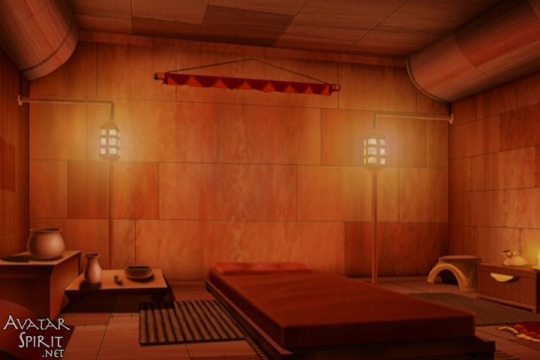
And I think it’s quite telling that Hakoda and Katara have this conversation.
Katara: He left.
Hakoda: What?
Katara: A/ang. He just took his glider and disappeared. He has this ridiculous notion that he has to save the world alone, that it’s all his responsibility.
Hakoda: Maybe that’s his way of being brave.
Katara: It’s not brave, it’s selfish and stupid! We could be helping him and I know the world needs him, but doesn’t he know how much we need him, too? How can he just leave us behind?
Hakoda: You’re talking about me, too, aren’t you?
Now I think it’s important that A/ang leaving is being compared to Hakoda leaving. Aang exacerbates her abandonment issues. And it’s nothing new. He left in The Storm (1.12), in The Desert (2.11), and it’s literally the reason why the Avatar has disappeared a hundred years ago. Because he ran away.
And even then, A/ang doesn’t come back. It’s always Katara (and the others) who have to go and find him.
In The Storm:
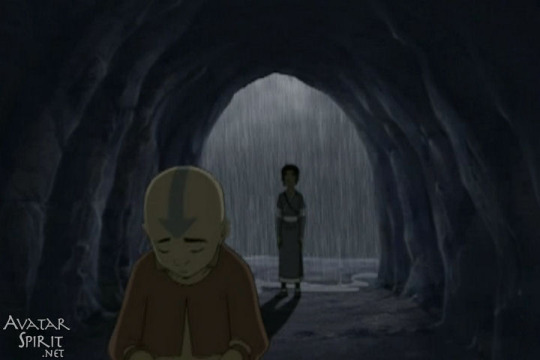
(Where Katara tells him that maybe running away from his problems wasn’t that bad, maybe it was meant to be, which is… debatable, to be honest. When the Fire Nation attacked, I’m sure the Air Nomads would have found a way to hide A/ang, the literal Avatar. And if he had been killed (which is terrible, I’m sorry) during the attack, the Avatar Cycle would have resumed and another Avatar would have been born. But that’s beside the point.)
And in The Awakening:

He only really comes back in The Desert, but if he wasn’t hopeless, exhausted and still had food/water left, I’m sure he wouldn’t even have come back. He would have kept looking for Appa.
Besides, he never apologizes to Katara or Toph, and Katara still has to take it upon herself to do the emotional labour.
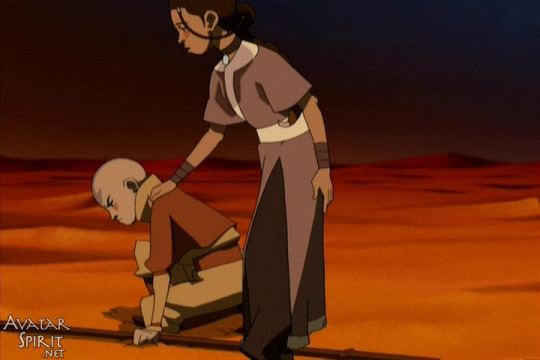
And on that note, while A/ang doesn’t run away in The Serpent’s Pass, I still think it’s important to point out that Katara has to find him to, again, be the emotional labour in their friendship.

I wouldn’t have as much of a problem about A/ang always running away from his problems.
If he actually learned from it.
But even during the series finale, he still runs away because he doesn’t want to kill Ozai. That’s how he finds the lionturtle. By running away and leaving the others - and Katara - to worry.

And to find him.

Now, what does that have to do with Zutara?
Well, throughout the show but especially from season 2 onwards, everything points Zuko in the Avatar’s direction. He has to find the Avatar to restore his honour. He has to come back to teach Aang firebending. He has to come back to fight the good fight. He has to come back to defeat Azula and Ozai.
And who is, of course, always following the Avatar?
Katara.
But this isn’t just about Aang. This is about how the whole show is structured in a way that brings Zuko and Katara together. And he always comes back.
To her.
They always end up together. Somehow. Someway.
As enemies:
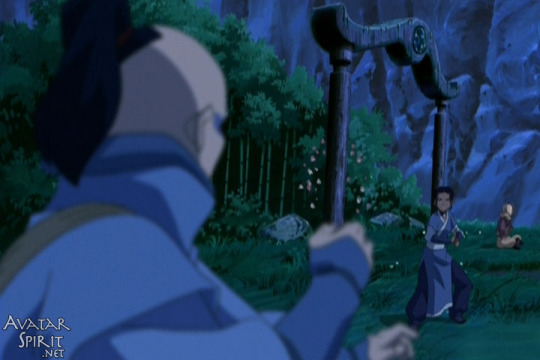
As almost friends:
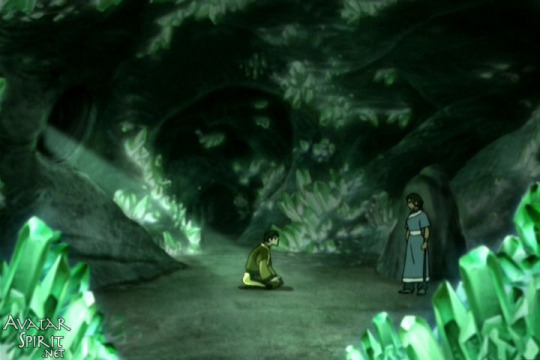
As “I’m sorry, could you allow me to be your friend again?”
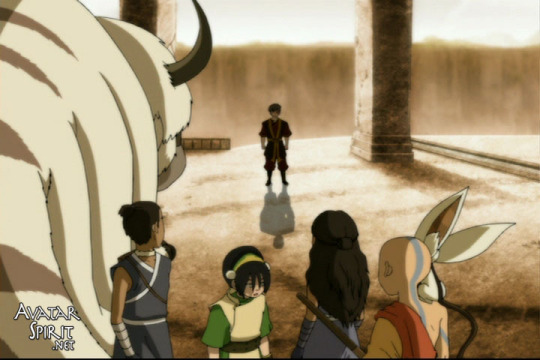
As “I’m trying to right my wrongs, what can I do to make it up to you?”

(Something A/ang never did.)
And, of course, as friends:
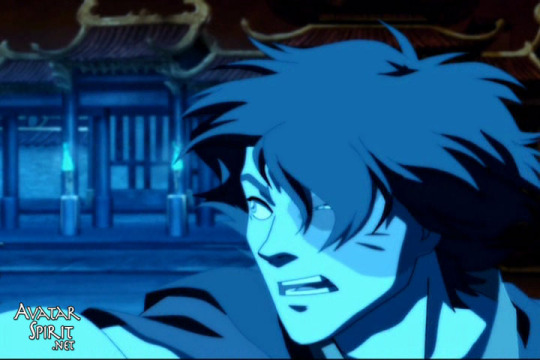


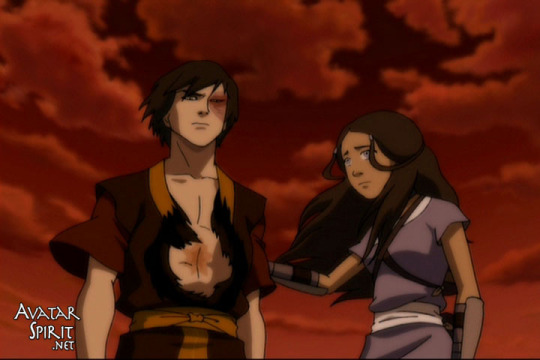
There’s a reason why it’s always Zuko and Katara who share a moment during every season finale. Because it’s thematically important in the show.
But it’s also important to point out that while A/ang doesn’t come back to Katara and exacerbates her abandonment issues…
Zuko comes back. Always.
2K notes
·
View notes
Text
i wish a girl was fucking me extremely hard right now with a strap on. this pussy needs to be pounded.
2K notes
·
View notes
Photo
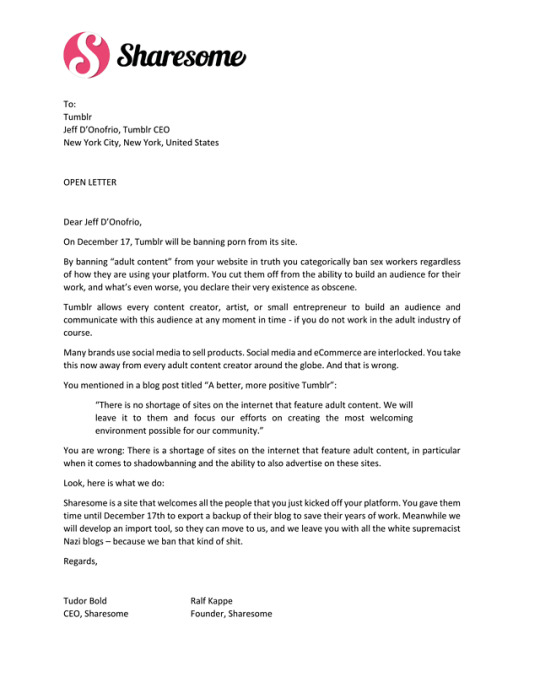
Options are being brought to us, now. Read this open letter then peruse their option. -Wolf
OPEN LETTER
To: Tumblr Jeff D’Onofrio, Tumblr CEO New York City, New York, United States
Dear Jeff D’Onofrio,
On December 17, Tumblr will be banning porn from its site.
By banning “adult content” from your website in truth you categorically ban sex workers regardless of how they are using your platform. You cut them off from the ability to build an audience for their work, and what’s even worse, you declare their very existence as obscene.
Tumblr allows every content creator, artist, or small entrepreneur to build an audience and communicate with this audience at any moment in time - if you do not work in the adult industry of course.
Many brands use social media to sell products. Social media and eCommerce are interlocked. You take this now away from every adult content creator around the globe. And that is wrong.
You mentioned in a blog post titled “A better, more positive Tumblr”:
“There is no shortage of sites on the internet that feature adult content. We will leave it to them and focus our efforts on creating the most welcoming environment possible for our community.”
You are wrong: There is a shortage of sites on the internet that feature adult content, in particular when it comes to shadowbanning and the ability to also advertise on these sites.
Look, here is what we do:
Sharesome is a site that welcomes all the people that you just kicked off your platform. You gave them time until December 17th to export a backup of their blog to save their years of work. Meanwhile we will develop an import tool, so they can move to us, and we leave you with all the white supremacist Nazi blogs – because we ban that kind of shit.
Regards,
Tudor Bold Ralf Kappe CEO, Sharesome Founder, Sharesome
31K notes
·
View notes
Text
listen i know a lot of lesbians don’t like the idea of a strapon because it has been ruined for them by gross lesbian porn that’s for straight men, but think about it….. think about your girl on her hands and knees, your hand wrapped in her hair and you fucking her from behind, thrusting into her as she’s moaning so loud and begging for you to go faster…. or think about you lying on your back as the girl you’re with is on top of you, one hand wrapped around your throat and the other touching your chest, and fucking you roughly as she whispers into your ear…. strapons are incredible and not just for the consumption of straight men
3K notes
·
View notes
Text
Reblog if you're a girl who wants other girls to send you naughty asks.
84K notes
·
View notes
Text
I really want a girl to spread my legs get on top of me and hump the fuck out of my wet pussy right now 🤤
16K notes
·
View notes
Photo

OoOokay I admit it, it was just a sketch of two girls having fun. But I wanted so much to celebrate the bubbline miracle! And I don’t have enough time for my lil hot blog, sooo… AND OH, I guess that it’s pretty much what happened after the kiss scene, right?
2K notes
·
View notes
Photo

“the third street” is a lucky find whether for a contemporary collector/archivist or for the lesbians who lived at the time of its publishing: 1964
an obvious, if still conservative, example of a butch-fem couple, this simple and somewhat drab cover nonetheless holds interest in the fact it appears the fem is the one leading her butch down that murky “third street”, when convention dictated the butch must always be corrupting the fem. I also love this cover because it is overt in its lesbianism. the title refers to the term “the third sex”, commonly used throughout the twentieth century to refer to lesbians as well as all other gay and gender non-conforming people. the art is daringly direct, the representation of the butch and fem unmistakable and inherently charged with sexual chemistry. despite the heels, the eyelashes and the far too form-accentuating women’s clothing, the suggestion of butch is obvious and convincing enough for the average clueless heterosexual reader…

just in case you weren’t sure what the title refers to, the back cover clears it up there.
I expected that, as with the last pulp fiction I shared, adam and two eves, the content within would have little to do with the cover art and this would be another dreary tale of fickle experimentation that finally gave in to heterosexual conformity.
I was wrong.
the first note of authenticity came in the realisation that one of the two central female characters, pat, is most definitely butch. this is coyly dealt with, but obvious to any lesbian looking closely in the effort to find a meaningful reflection of her people. pat’s lovers are highly feminine and she is subtly positioned as a foil to that energy. the nature of her desire is described as active and fierce. her large hands and taller physique are often referred to.

the way a butch was described in those days. reading between the lines is essential.
later in the book, her girlfriend karen reflects on how different pat looks dressed for work and how special it is that she gets to see pat at home without makeup and in her own clothes, as herself. I wonder about this manuscript and how it was changed in the editing process (not that this was ever done exhaustively in pulp fiction) – were the descriptions of butchness more defined in the author’s first draft? was she (and I am almost sure it was she) compelled to change her vision according to a publisher’s demands? was it done without her knowledge, pumped through the factory line of mass production, a few hasty cuts, some modified sentences? or had she been deliberately subtle – maybe even timid – considering the world around her?
there is an early love scene that also serves to illustrate pat’s butchness through her seduction by a voluptuous young model:

as I flicked through the pages, seeking confirmation of what I suspected, I began to realise this book’s worth lay in far more than an appealing cover. the butch-fem art had been irresistible to me, but I had never guessed I might’ve found an authentic lesbian love story.
pat is an artist, a butch lesbian who has just had her heart cruelly broken by a former lover. karen is an unhappily married young woman with an abusive husband, desperately seeking escape. the two meet when karen models for pat, in need of money, and quickly become close friends. and without much ado after that, they become lovers.


hands up everyone who thought they were frigid before they realised they were just gay
the love scenes in these old pulp fictions are nearly always obviously for titillation of male readers, written in a way that is not explicit but somehow lurid nonetheless. but there’s a difference to the love scenes in this book – though not any more competent, there’s the presence of a tenderness and an earnestness that is often missing. a more intimate sensibility that speaks to what the characters are experiencing, not what the reader might be feeling. convinced as I became that this book had been written by an actual lesbian, I let go of my critical mind and considered what these love scenes might have meant to a lesbian in 1964, who desperately needed something uplifting and affirming of her desire. I remembered what it had been like before I came out, when I had been constricted with need for other women and desperate for material that spoke to that. and I remembered the exquisite joy of finally kissing a woman, of melting into each other. I found myself with a thumping heart and flushed cheeks. there are so many ways that history can live in us.
still, the end of the book filled me with anxiety. I knew what to expect. regardless of what had come before, it would be typical of this genre for karen to have a change of heart, to return to security and stability with men, leaving pat broken and miserable in her life of “exotic evil”. these endings were often contrived and an abrupt change in direction. there was no relying on the bulk of the story to guide the outcome.
except, here again, I was wrong.


karen dumps her abusive ex-husband once and for all and she and pat look exultantly forward to their new life together. ‘conway’ is pat’s last name – essentially, this book ends in marriage for these two women, which is surely one of the most extraordinary conclusions for a cheap pulp fiction novel published in 1964 and available for $0.50 at the local drug store.
I look at the lines made in red, emphasising this unusually happy ending, and wonder about the person who made them, and why. was she the first person to own this book? the second, the third? did she read this book alone, lonely and aching, and take comfort here? or was she living out and proud, loving other women and finding delight in a rare example that affirmed the brave choices she made? did she make these underlinings for a friend she shared this book with, a penpal maybe, another woman with whom she exchanged promises of love and passion? was she even a lesbian herself? how could she not have been, and still draw those lines beneath pat and karen’s unlikely triumph? how many hands has this book passed through, and what has it meant to them? although coloured by age, the spine is only cracked in a couple of places and the cover and pages are basically intact and unmarked. just those lines of red underscoring the possibility of happiness and self-actualisation. it meant something to me, to see them and know someone else was just as happy to read those final paragraphs as I was, and at a time the stakes were considerably higher.
considering the content of this book, it brings new meaning and depth to the cover art. the absence of overt titillation becomes distinct – there is no cleavage on display, no salacious suggestion of imminent sex. not even their bottoms have been luridly exaggerated. nor is there any trace of distress or conflict, essential elements in lesbian pulp fiction cover art if sex did not play the major role. instead there is simple, frank romantic intimacy in the way their hands are clasped together, the way the fem looks back at her butch with an encouraging smile, leading the way.
in the book, karen briefly struggles against the realisation of her lesbianism, testing herself to see if this is the life she wants, if she truly cannot be satisfied with the world of men. but in the end, she wholeheartedly embraces the truth of her nature and her desires and finds a fulfilling and authentic love with pat. the cover art now reflects this journey, showing us that karen is not afraid of being true to herself although it is socially condemned, that in her search for happiness she will stride forward into the unknown, bold and brave as countless fems before her and since, proudly showing our butches we walk alongside them – and before them when they need us to.
even the title has new significance – “the third street”. karen and pat are not presented to our gaze – and most especially not to the male gaze – but turned from us, hand in hand, heading down that titular street. in 1964, women had two choices – marriage or spinsterhood. but here we see another way, a third way. an alternative path that lesbian women can take together and find love and happiness, a way to be fulfilled outside the conventions of society.
none of this would have been intentional. the artists were unlikely to have read the books before painting for them. they were probably given direction or a brief of some kind. it was a very rare publisher that had any genuine care for the content of these books or how they were represented. the bottom line was the objective, and pulp fiction was churned through production. but taken as a whole, this book is a gift from the past, a glimmer of defiant hope in a medium that routinely crushed it.
so who was joan ellis? this post on pulp curry suggests the name was a pseudonym used by multiple authors, and considering many of “joan’s” other titles are pure sleaze, this is possible though not definitive. regardless the writer of third street was a real person who penned a story of two women falling in love and rising above the odds to make a happy life for themselves. she wrote this book for a reason. and, in doing so, created new meaning for the lesbians who would go on to read it.
I might never find out the true story behind joan ellis. but this book is a testament to the significance of our individual lives and how each of us contributes to a living history that constantly interacts and develops around us. the hope that this book would have given to many of its readers, and its power to reach across decades and share with us a sensitive insight into another lesbian’s efforts to change the narrative set for us, should not be easily dismissed. every effort made by the lesbians who went before us to live their lives bravely and openly has given us the freedom we have today. and through our own efforts, no matter how small or seemingly incidental, we build a new future for those who will come after us.
11K notes
·
View notes
Text
Any girls
Want to cum, like or reblog this and I’ll message every single girl and help her cum
*message me if I miss you 😘
1K notes
·
View notes
Text
reblog if you’re a girl and it’s okay for me to message you when i’m horny
18K notes
·
View notes
Text
I really just wanna edge a girl over and over until she’s throbbing. I want her pussy to crave my tongue. I want her needy for me
1K notes
·
View notes
